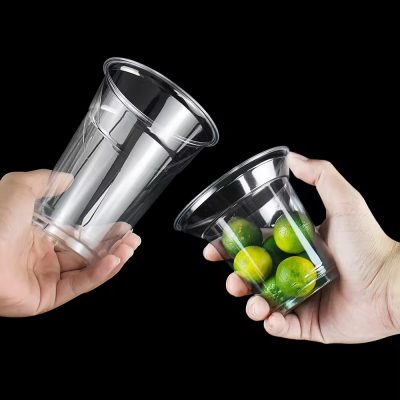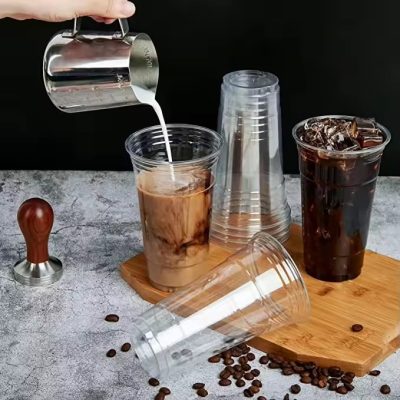Plastic cups represent a cornerstone of modern beverage service, offering convenience, functionality, and versatility across diverse settings. This article navigates through the realm of plastic cups, unraveling their significance, attributes, applications, and the industry’s strides towards sustainability and innovation.
Unveiling the Role of Plastic Cups
Plastic cups serve as indispensable companions in our daily lives, seamlessly integrating into various contexts, from casual gatherings to bustling food establishments. Their lightweight nature, durability, and affordability make them a preferred choice for serving a myriad of beverages, ranging from refreshing iced drinks to piping hot coffee.
Exploring the Characteristics of Plastic Cups
Material Diversity: Plastic cups are crafted from a range of materials, including PET, PP, and PS, each offering distinct advantages such as transparency, heat resistance, and recyclability. PET cups are commonly used for cold beverages, while PP cups excel in hot beverage applications.
Versatility in Design: Plastic cups come in an array of sizes, shapes, and configurations to accommodate diverse beverage types and serving preferences. Whether adorned with lids, straws, or handles, plastic cups are designed to enhance convenience and functionality for both consumers and businesses.
Durability and Portability: Renowned for their resilience, plastic cups are shatter-resistant and lightweight, making them ideal for on-the-go consumption and outdoor events. Their robust construction ensures reliable performance, reducing the risk of breakage compared to glass or ceramic alternatives.
Cost-Effectiveness: Plastic cups offer a cost-effective solution for beverage service, allowing businesses to efficiently serve large volumes of drinks without compromising on quality or affordability. This makes them a staple choice for restaurants, cafes, and events where budget-conscious solutions are paramount.
Applications Across Industries
Food and Beverage Industry: Plastic cups are prevalent in restaurants, cafes, and food service establishments, serving as vessels for soft drinks, juices, smoothies, and more. Their versatility and disposability make them indispensable tools for quick-service establishments and catering operations.
Hospitality and Events: Plastic cups find widespread use in hospitality settings, from hotels and resorts to conferences and concerts. Their ease of use, hygienic properties, and customizable branding options make them a preferred choice for beverage service at large-scale events and gatherings.
Household and Everyday Use: In households, plastic cups offer convenience for everyday hydration, mealtime, and entertaining. Their lightweight construction and durability make them practical options for families, outdoor activities, and picnics, ensuring refreshment is always within reach.
Sustainable Solutions and Innovations
Recyclability: Many plastic cups are recyclable, with efforts underway to increase collection rates and promote the use of recycled materials in cup manufacturing. By incorporating recycled content into new products, the industry aims to reduce reliance on virgin plastics and minimize environmental impact.
Biodegradable Alternatives: Manufacturers are exploring biodegradable and compostable alternatives to traditional plastic cups, utilizing plant-based materials such as PLA (polylactic acid) or biodegradable additives. These alternatives offer a more environmentally friendly option for single-use cups, aligning with consumer preferences for eco-conscious products.
Design Advancements: Innovations in cup design focus on optimizing material usage, enhancing stackability and nesting capabilities, and improving user experience through ergonomic features and customizable branding options. By prioritizing efficiency and sustainability in design, manufacturers can create cups that meet consumer needs while minimizing environmental footprint.
Conclusion: Striking a Balance
In conclusion, plastic cups play a pivotal role in beverage service, offering practicality, performance, and versatility across diverse settings. While concerns about plastic pollution persist, the industry is actively pursuing sustainable solutions and innovations to address these challenges. By embracing recyclability, biodegradability, and design optimization, plastic cups can continue to serve as essential tools for beverage containment while minimizing their environmental impact.







